 |
|
|---|
One Good Thing: how to make the best garlic shrimp
In Mexico, you can find garlic shrimp — camarones al ajillo — on menus everywhere; it’s a ubiquitous dish served in seafood restaurants coast to coast (and in between).
It’s simple to make, but like most recipes with just a few ingredients, it can easily go wrong.
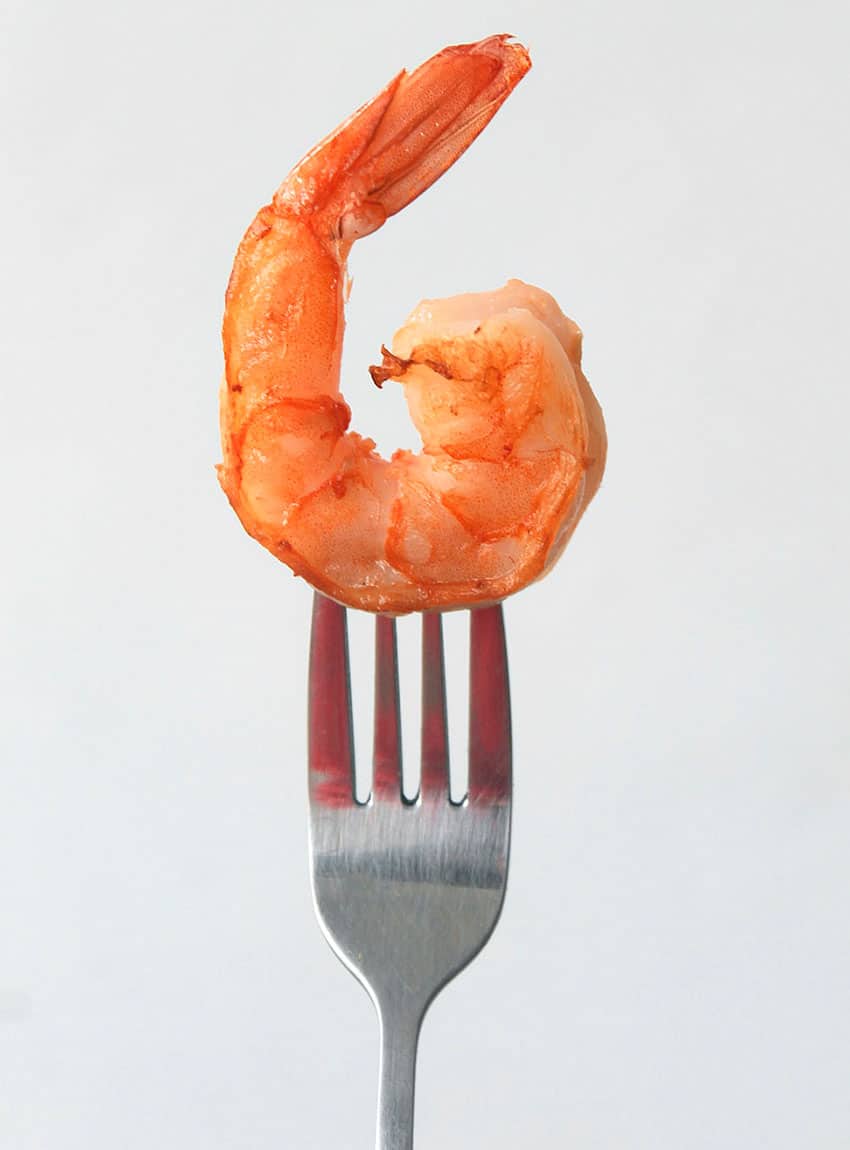
Arguably, the most common mistake is overcooking the shrimp, resulting in tough, leathery, flavorless lumps no one wants to eat. No matter their size, shrimp cook in minutes (or less!). The flesh will turn from grey to white that’s tipped with pink, which means that they’re done and need to be removed from the heat.
The other challenge with this dish is cleaning the raw shrimp — always kind of a hassle. At some of the fish markets where I live, the shrimp vendors will clean the shrimp for you, but usually what you’re going to find are bags of flash-frozen shrimp with the heads off, which makes the process a little easier.
Purists will prefer them that way because as soon as the shrimp begins to die, the head releases enzymes that make the flesh mushy. That said, if the heads are still on, cut or break them off; same with the legs.
The shell can be peeled off in one piece and discarded, although in this recipe, we’ll be keeping them to infuse the oil with extra flavor. (They’re also great for making stock; seal them in a freezer bag and save for future use.) Tails can be kept on or twisted off, as you like.
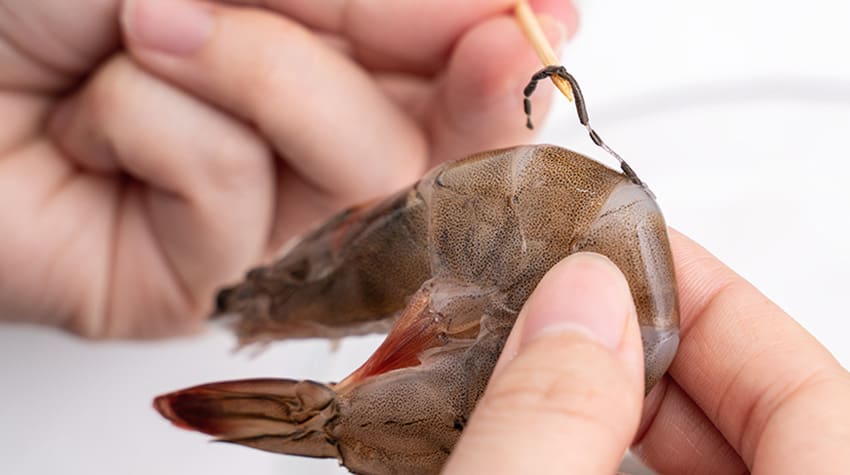
Now for the gross part: deveining. Hold the shrimp in your left hand with the back side up. With a small, sharp knife, make a slit from end to end, about 1/8-inch deep.
It will split open, and you’ll see a dark blue or black “vein” (actually the digestive tract). Pull that out with the knife and discard. If you’re lucky, it will come out in one piece. I like to do this under running water.
Once the veins are removed, rinse the shrimp well under running water, discarding any veiny bits that may surface. If you’re not using them right away, set the shrimp in a bowl of cold ice water until you’re ready.
Another method is to use a fork to slit the back and pull out the vein with one smooth move. That’s never worked for me, but feel free to give it a try.
For more info about buying, cleaning and cooking with shrimp, go here.
I always try to time making shrimp dishes with garbage night so I can get rid of the shells quickly. Otherwise, I wrap them tightly in two plastic bags before putting them in the trash; in the hot summer, I sometimes put the wrapped shells in the freezer until they can go out in the trash.
What makes this dish stand out? Not the amount of garlic, although that’s certainly part of the flavor profile. What takes this dish to the next level is that you’re going to infuse the oil with a rich shrimp essence you don’t get by just sautéing the camarones in the oil for the few minutes required to cook them. It’s a small additional step that’s well worth the little bit of extra time it takes.
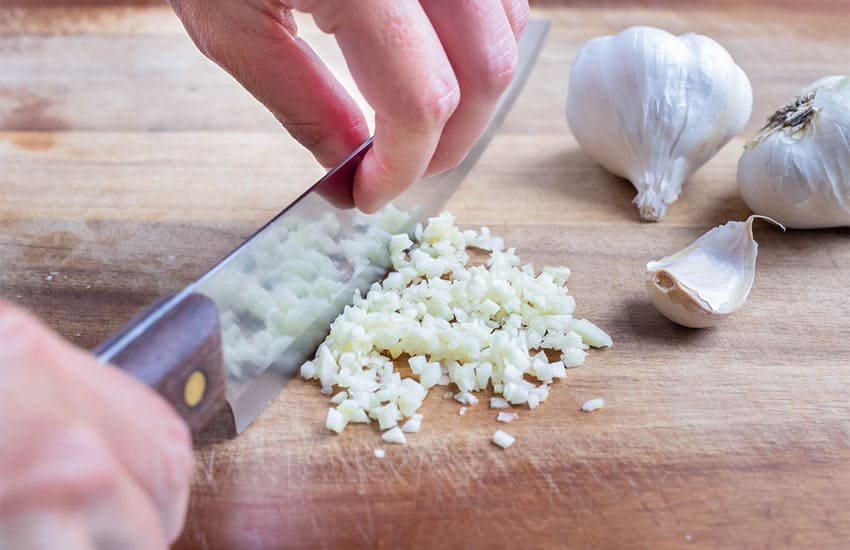
The Best Garlic Shrimp
- 12 cloves garlic
- 1 lb. large shrimp, peeled and cleaned, shells reserved
- ½ cup extra-virgin olive oil
- Salt (Kosher if you have it)
- ¼ tsp. baking soda
- Pinch red pepper flakes, or a 1-inch piece dried guajillo chili
- 1½ tsp. sherry vinegar OR red wine vinegar and a pinch of sugar
- 2 Tbsp. chopped fresh parsley
Finely mince four garlic cloves and place in a large bowl. Smash four more of the cloves under the flat side of a knife and place in a large skillet. Thinly slice the remaining four cloves and set aside.
In the bowl with the minced garlic, add shrimp, 3 Tbsp. olive oil, ¾ tsp. salt and baking soda. Toss to combine thoroughly. Set aside at room temperature.
Add shrimp shells, remaining olive oil and pepper flakes to skillet with smashed garlic. Set over low to medium-low heat and cook, stirring occasionally, until the shells are deep ruby-red, the garlic is pale golden brown and the oil is intensely aromatic, about 10 minutes. The oil should be gently bubbling the whole time, but don’t let the garlic burn.
When ready, strain through a fine mesh strainer into a small bowl, tossing and pressing the shrimp shells to extract as much oil as possible. Discard shells and garlic.
Return flavored oil to skillet and heat over medium-high until shimmering. Add sliced garlic and cook, stirring constantly, until garlic turns a pale golden brown, barely 1 minute. Stir in shrimp, tossing and stirring constantly until barely cooked through, about 2 minutes.
Add vinegar and parsley and toss to combine. Season to taste with salt. Serve immediately over rice, or use as a filling in tacos, quesadillas or burritos.
Janet Blaser is the author of the best-selling book, Why We Left: An Anthology of American Women Expats, featured on CNBC and MarketWatch. She has lived in Mexico since 2006. You can find her on Facebook.
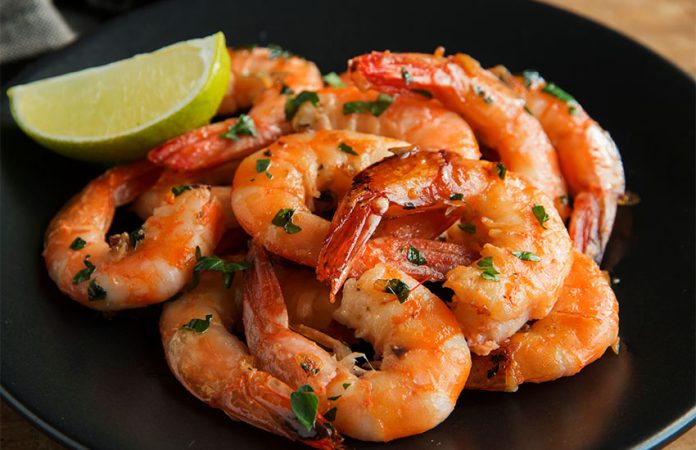



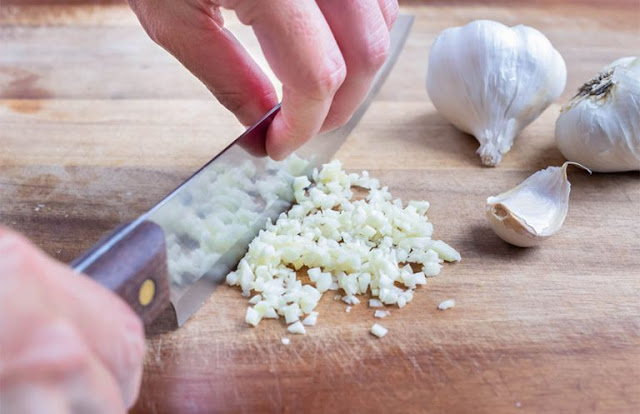
No comments:
Post a Comment
Thank you. Comments are welcome.
ivan